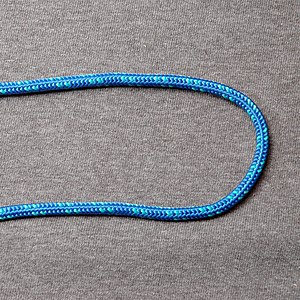Translations:Adventist Youth Honors Answer Book/Recreation/Knot Tying/2/en
From Pathfinder Wiki
1. Define the following terms:
It's a good idea to begin this honor with the definitions so your Pathfinders have a working vocabulary of the various terms involved. Telling them to "make a bight" or "take the standing part" makes little sense until these terms are understood.
- a. Bight
- The term bight refers to any curved section, slack part, or loop between the two ends of a rope,
- b. Running end
- The free end of the rope, usually shorter. This is the end of the rope in which a knot is being tied.
- c. Standing part
- The part of the rope between the Running end and the Standing end (the end that doesn't move, think of it as if someone is holding it)
- d. Underhand loop
- A loop formed by passing the running end of a line under the standing part.
- e. Overhand loop
- A loop formed by passing the running end of a line over the standing part.
- f. Turn
- Adventist Youth Honors Answer Book/Knot/Turn
- g. Bend
- A bend is used to tie two ropes together, as in the Sheetbend. Technically, even the Reef knot is a bend
- h. Hitch
- A hitch is used to tie a rope to a spar, ring or post, such as the Clove hitch. Hitches can also be used to tie one rope ONTO another rope, as in the Rolling hitch.
- i. Splice
- A knot formed by interweaving strands of rope rather than whole lines. More time consuming but usually stronger than simple knots.
- j. Whipping
- A binding knot used to prevent another line from fray.

